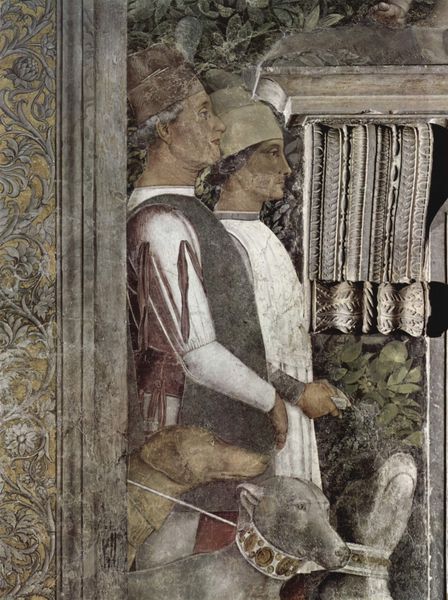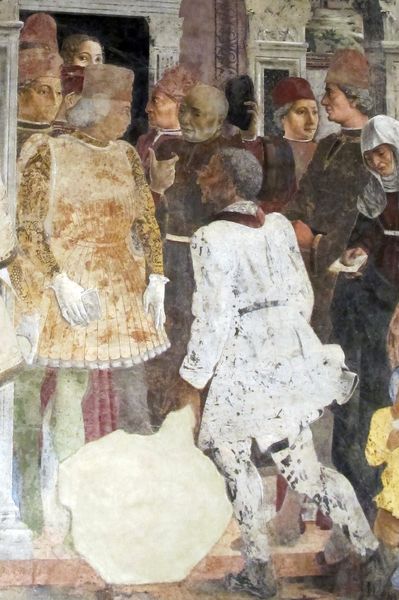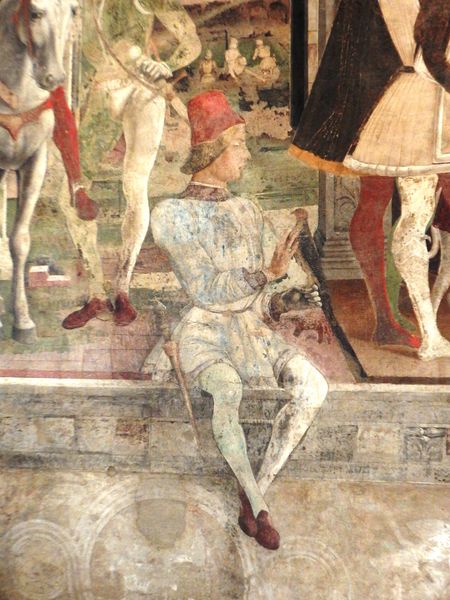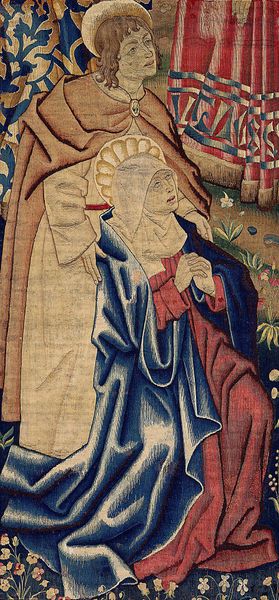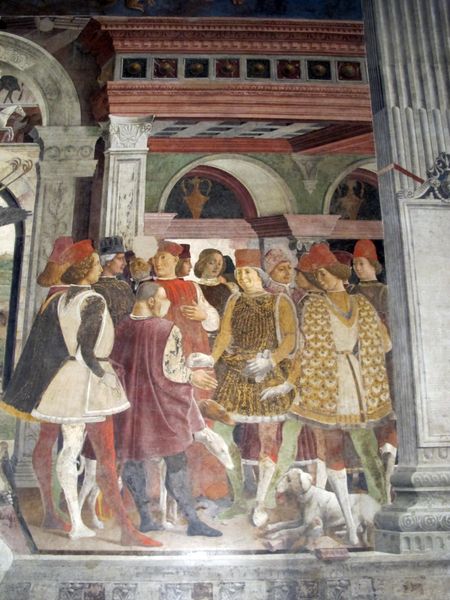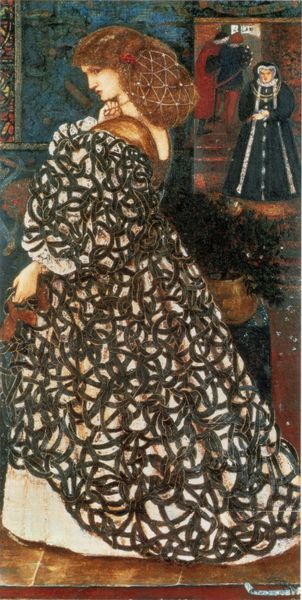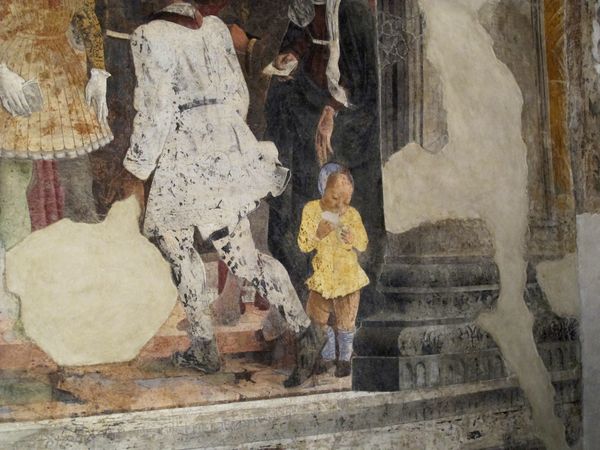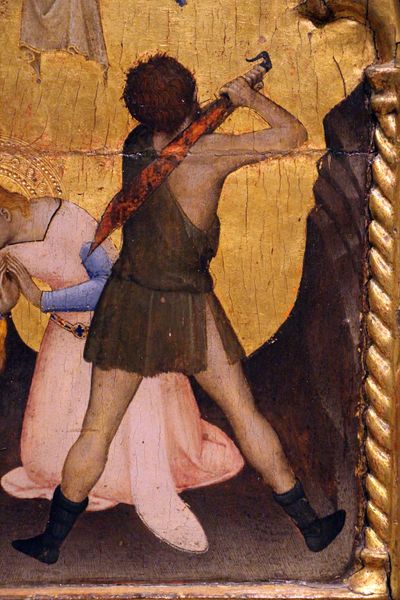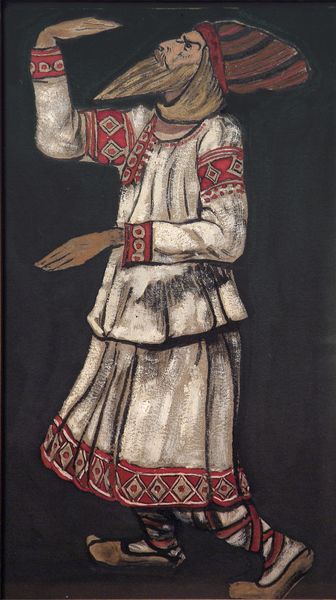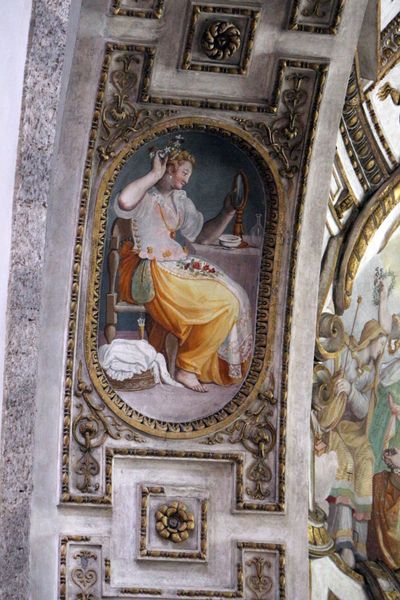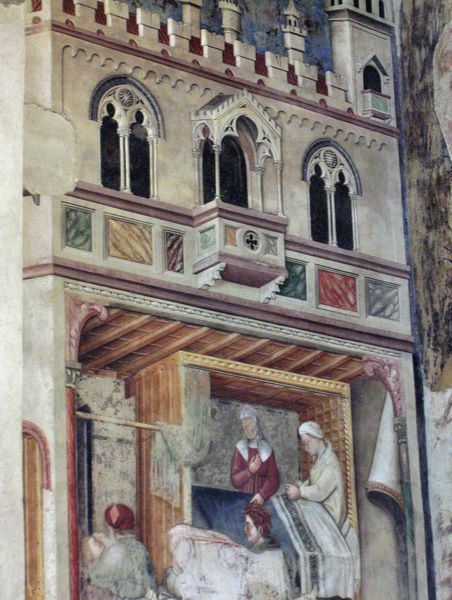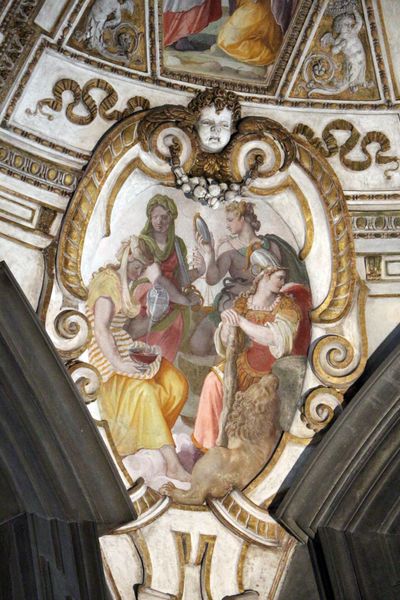
fresco
#
portrait
#
figuration
#
fresco
#
genre-painting
#
italian-renaissance
Copyright: Public domain
Curator: This is a detail from "April," a fresco by Francesco del Cossa, dating back to around 1470. It’s part of a series adorning the Palazzo Schifanoia in Ferrara. Editor: What strikes me first is how earthly it is. Not just earthy tones, but this incredibly human parade caught forever mid-stride. They almost feel like Roman senators out for a stroll, monumental yet so relaxed. Curator: Indeed. Think of fresco as a medium. Paint applied directly onto wet plaster demanded speed and precision. Del Cossa needed assistants. Each giornata, or ‘day's work’ becomes an index of time and labour within the very material. You can almost picture the rhythm of its creation! Editor: But consider how carefully each figure is delineated. Their gazes, their garments, they’re practically bursting with individual symbolism. This procession – is it ceremonial, aspirational, an attempt to align earthly power with divine order? What hidden narrative lies within the garments and gestures on display? Curator: We mustn’t dismiss the socio-economic dimension either! Look at the fine details in the clothing - the expensive dyes, the tailored cuts, the details of the fresco execution itself! These are commodities signaling not only status but access to the specialized trades needed to manufacture, tailor, and finally portray them. Consider also the patronage – who commissioned this spectacle? Editor: Surely these refined details serve symbolic weight too. Notice the postures. The recurring motifs in the clothing, the red cap in this scene. Are these signifiers connected to a complex system of family ties, astrology, seasonal festivities? The scene is like a tapestry woven with the visual vocabulary of power and fertility. Curator: Power represented through display; think of the materials and expertise required for creating it in 15th century Ferrara. Del Cossa shows us the physical manifestations of privilege. Editor: Ultimately, doesn't that meticulous rendering, no matter how labor-intensive, give the scene a tangible quality? Like an opening into their world, a chance to see ourselves reflected across time. Curator: The details remind us about labor practices while providing glimpses of social history etched in plaster and pigment. Editor: Yes, each gaze invites further consideration of meanings. It creates this profound feeling, where then meets now.
Comments
No comments
Be the first to comment and join the conversation on the ultimate creative platform.
